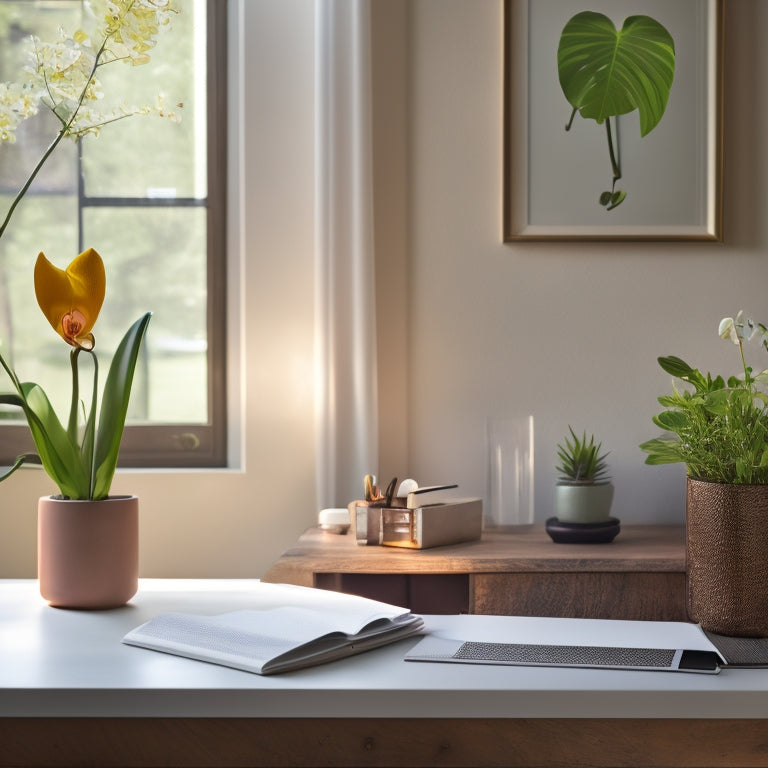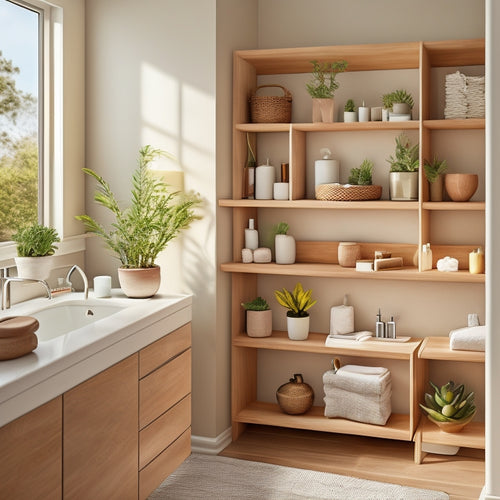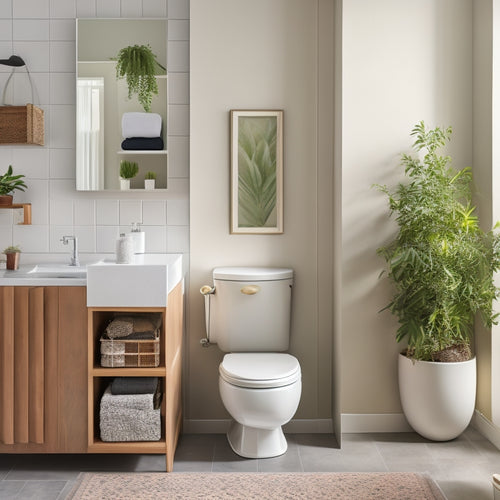
Master Realistic Organization: Tips for Daily Life
Share
You're tired of falling short of social media's unrealistic organization standards. It's time to redefine what mastering organization means to you. Start by embracing imperfections and focusing on building habits that create a tailored system for your daily life. Break down tasks into smaller, achievable goals and establish consistent routines. Streamline your space by optimizing layouts, adopting minimalist decor, and investing in functional storage. By doing so, you'll create a more productive you. As you work towards a more realistic approach to organization, you'll uncover even more strategies to enhance your daily routines and boost your productivity.
Key Takeaways
• Set realistic goals and expectations, focusing on creating a system that genuinely works for you and embracing imperfections.
• Develop organizational habits through small, achievable daily tasks and consistent routines to maintain a clutter-free space.
• Optimize your space by evaluating usage, adopting a minimalist approach, and investing in functional storage solutions.
• Identify and maximize productivity zones by creating ergonomic workspaces and utilizing vertical storage for easy access.
• Expand your organizational toolkit by incorporating digital and physical tools, prioritizing frequently used items, and exploring project management software.
Embracing Realistic Expectations
By recognizing that social media's polished organization displays often don't reflect real-life messiness, you can break free from the pressure to achieve perfection and focus on creating a system that genuinely works for you.
Setting boundaries and managing expectations are key to embracing realistic expectations. Don't compare your behind-the-scenes chaos to someone else's highlight reel. Instead, focus on finding balance and embracing imperfections.
Remember, organization is about functionality, not aesthetics. It's okay to have a 'good enough' system that allows you to get things done efficiently, rather than aiming for Instagram-worthy perfection.
Building Organizational Habits
Now that you've embraced realistic expectations, it's time to develop habits that'll help you maintain your organized space and systems over the long haul. To build organizational habits, focus on habit formation and setting goals that align with your daily routines and time management. Start by identifying small, achievable tasks that you can accomplish daily, and gradually increase your goals over time.
| Habit | Goal |
| Daily 10-minute tidy | Spend 10 minutes each morning tidying up your living space |
| Weekly review | Set aside 30 minutes each Sunday to review your schedule and tasks for the week |
| Morning routine | Establish a consistent morning routine that includes time for planning and prioritization |
| Task delegation | Identify one task each day that can be delegated to free up time for more important tasks |
| Evening wind-down | Spend 10 minutes each evening organizing your space and preparing for the next day |
Streamlining Your Space
To streamline your space, start by evaluating how you use each area and identifying opportunities to optimize your layout for maximum efficiency. This means considering how you move through each room and what tasks you perform in each space. By understanding your habits, you can create a layout that supports your daily activities.
Here are some tips to get you started:
-
Adopt a minimalist decor approach to reduce visual clutter and create a sense of calm.
-
Invest in functional storage solutions that serve a purpose, such as shelving units or storage ottomans.
-
Consider the flow of traffic in each room and arrange furniture to create a clear path.
Maximizing Productivity Zones
Identify the areas of your home or workspace where you spend most of your productive time, as these zones require intentional organization to maximize your output.
By optimizing workflow efficiency, you'll get more done in less time. Create ergonomic workspaces that promote comfort and reduce distractions. This means positioning your chair, desk, and computer to avoid straining your body.
Next, focus on maximizing storage capacity by utilizing vertical space. Install shelves or storage units that keep frequently used items within easy reach. This will help you stay focused on the task at hand and avoid wasting time searching for misplaced items.
Expanding Your Organizational Toolkit
By incorporating a mix of digital and physical tools, you can greatly expand your organizational capabilities and tackle a wide range of tasks with enhanced efficiency. This fusion allows you to tap into the strengths of each, creating a well-rounded system that caters to your unique needs.
Consider investing in practical storage solutions, such as stackable bins or file cabinets, to keep your workspace clutter-free.
Design functional layouts that prioritize frequently used items, making it easier to access what you need when you need it.
Don't forget to explore digital tools like project management software or apps that help you stay on top of tasks and deadlines, ensuring you're always on track.
Frequently Asked Questions
How Do I Maintain Organization When Living With a Messy Partner?
You set boundaries with your messy partner by communicating openly about your needs, establishing clear expectations, and designating personal spaces, ensuring a harmonious coexistence while maintaining your own organizational habits.
Can I Still Be Organized if I Have a Small Living or Work Space?
Did you know that 65% of people feel more in control when their space is organized? You can still be organized in a small living or work space by optimizing your space and implementing micro habits, like designating a spot for each item and creating a daily tidying routine.
How Often Should I Reassess and Adjust My Organizational Systems?
You should reassess and adjust your organizational systems regularly, like during a Seasonal Refresh, to confirm they still work for you. Schedule System Audits every 3-6 months to refine your setup and maintain productivity.
What Are Some Organization Strategies for People With Adhd?
Did you know that 75% of adults with ADHD report feeling overwhelmed by clutter? You can tackle this by setting visual priorities, breaking tasks into manageable chunks through task segmentation, and creating a "launching pad" for daily essentials to stay organized and focused.
Can Organization Systems Be Adapted for People With Disabilities?
You can adapt organization systems to fit your needs by using accessible calendars and adaptive tools, such as voice-controlled reminders or specialized software, to create a personalized system that works for you.
Related Posts
-

Space-Saving Bathroom Shelves With Open Design
Space-saving bathroom shelves with an open design can convert your compact space into a stylish sanctuary. By maximiz...
-

Over-The-Toilet Storage for Modern Homes
Over-the-toilet storage is a smart solution for modern homes, maximizing vertical space and enhancing organization. Y...
-

Innovative Miro Applications: Beyond the Usual
Miro's capabilities surpass traditional boundaries, offering a domain of innovative applications waiting to be explor...


